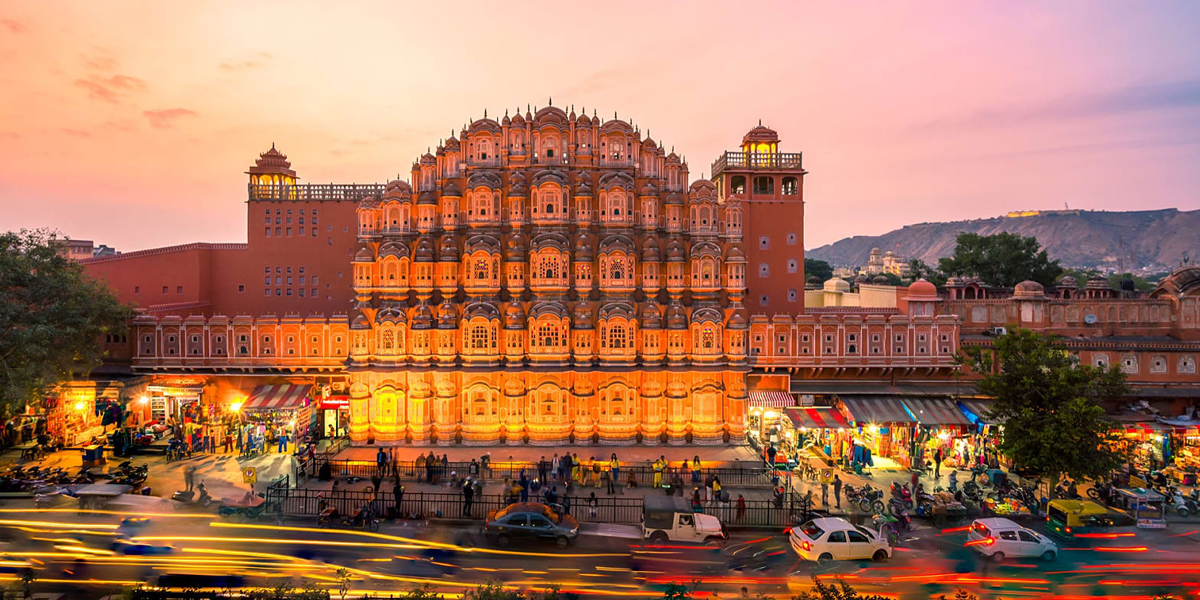Jaipur is famous for its rich cultural heritage and one of the most popular tourist destinations in India. Jaipur has some of the magnificent architectural marvels of ancient forts and monuments that stand strong till date. Although there are a lot of places where you could go to witness the rich heritage of Jaipur but I decided to go to a few particular places only since I didn’t have much time on my hand. I preferred going to places which had a rich history and architecturally distinct mostly in the outskirts of Jaipur.
 The Amer Fort is situated in Amer, which is 11 kilometres from Jaipur. Amer, originally, was the capital of the state before Jaipur. It is an old fort, built in 1592 by Raja Man Singh. This fort is also very popularly known as the Amer Palace. The Amer Fort was built in red sandstone and marble and the Maotha Lake adds a certain charm to the entire Fort. At the entrance to the palace there is a beautiful temple dedicated to Sila Devi. It consists of the Diwan-e-Aam meaning the “Hall of Public Audience”, the Diwan-e-Khas meaning the “Hall of Private Audience”, the Sheesh Mahal (a gorgeous mirror palace)/ Jai Mandir, and the Sukh Niwas where a cool climate is artificially created by winds that blow over the water cascading within the palace.
The Amer Fort is situated in Amer, which is 11 kilometres from Jaipur. Amer, originally, was the capital of the state before Jaipur. It is an old fort, built in 1592 by Raja Man Singh. This fort is also very popularly known as the Amer Palace. The Amer Fort was built in red sandstone and marble and the Maotha Lake adds a certain charm to the entire Fort. At the entrance to the palace there is a beautiful temple dedicated to Sila Devi. It consists of the Diwan-e-Aam meaning the “Hall of Public Audience”, the Diwan-e-Khas meaning the “Hall of Private Audience”, the Sheesh Mahal (a gorgeous mirror palace)/ Jai Mandir, and the Sukh Niwas where a cool climate is artificially created by winds that blow over the water cascading within the palace.
Must Read: My first Solo weekend getaway to Jaipur from Delhi
It is a must to your sightseeing itinerary if you visit Jaipur, audio guides and other registered guides are available here for a better understanding of the structure and history. It has an entrance fee of Rs.100 for Indians and if you are a student don’t forget your ID cards cause the entire monument sites have a subsidised entrance fee and in Amber you pay just RS 25.
The Jaigarh Fort is a majestic stronghold built by Sawan Jai Singh II. This almost-intact fort is surrounded by huge battlements and is connected to the Amer Fort aka Amber Fort), with subterranean passages. Originally built to protect the Amer Fort and the palace within the complex. Not many know about this but there is a passage which connects Amber Fort to Jaigarh Fort which is about 1.5Km in length, though you can travel up there by road as well. The fort is built with thick walls of red sandstone and is spread over a vast range of 3 kilometers in length, with a width of one kilometre. The fort houses the world’s greatest cannon on wheels known as the ‘Jaivana Cannon’ and a huge palace complex. This includes the Laxmi Vilas, Lalit Mandir, Aram Mandir and the Vilas Mandir. The fort has a well-tended garden which can be viewed by tourists even today along with an armoury and a museum.
Must Read: Most Beautiful Hill Stations Of India
Nahargarh Fort this fort was originally named Sudarshangarh Fort, which was later given a new name, Nahargarh which means ‘abode of tigers’. It is located in one of the oldest mountain ranges of the world, the Aravalli Hills. It gives a breath-taking view from the rooms and corridor of the entire Jaipur city. One of the major tourist attractions of Jaipur, Nahargarh Fort is noted for its extended wall which connects it to the Jaigarh Fort. In the fort there is a two-storey building which has suites for the king and his twelve queens. It is divided into nine similar apartments and each of these apartments has a lobby, bedrooms, toilets, kitchen and store. Other structures inside the palace include Diwan-I-Aam, an open air enclosure where the king met the common men and listened to their problems and complaints. The ride to the top of the hill where the fort is location is mesmerising, the road goes around the hill with elevation at every turn and the view is just overwhelming. If one had time on his hand they must take a trek up the hill.
Gaitore – Cenotaphs Of Kachhawa Rulers is located on the Jaipur-Amer road it is almost about 15km away from the city though I didn’t see many tourists there but it is one of the most prominent monuments in Jaipur. It is the royal cremation ground for the Kachhwaha Rajput kings and their family members. Unlike any other cremation ground this place has cenotaphs locally called as chhatri which is made up of marble and sandstone with the traditional Rajasthani carvings, dedicated to legendary kings who ruled Jaipur. There are such beautiful carvings on the cenotaphs which is said to be carved according to the taste of every different ruler cremated there. The architecture is such that it has a perfect blend of Islamic and Hindu temple architecture. This place is located in the valley on top of which the Gadh Ganesh temple is located. So basically you can visit here and set on foot to climb up the stairs to the temple.
Must Read: Jaipur Getaway from Delhi – Art and Craft
Sargasuli Tower is an architectural delight; it is located right in the centre of Jaipur City it’s a sky high building which gives a breathtaking 360 degree panoramic view of the entire pink city. As you enter the minaret there is a spiral upward gallery which goes round and up about 7 stories. It is also known as the tower of heaven. It is one of the architectural masterpieces which symbolises Jaipur’s victory over Mandhosingh by King Ishwari Singh resolving internal issues. The view from the highest point of this building is so stunning that thousands of visitors get attracted towards this place.
I hope this would have highlighted the fascinating facts about the historical monuments of Jaipur and would inspire you to take a trip down there.

